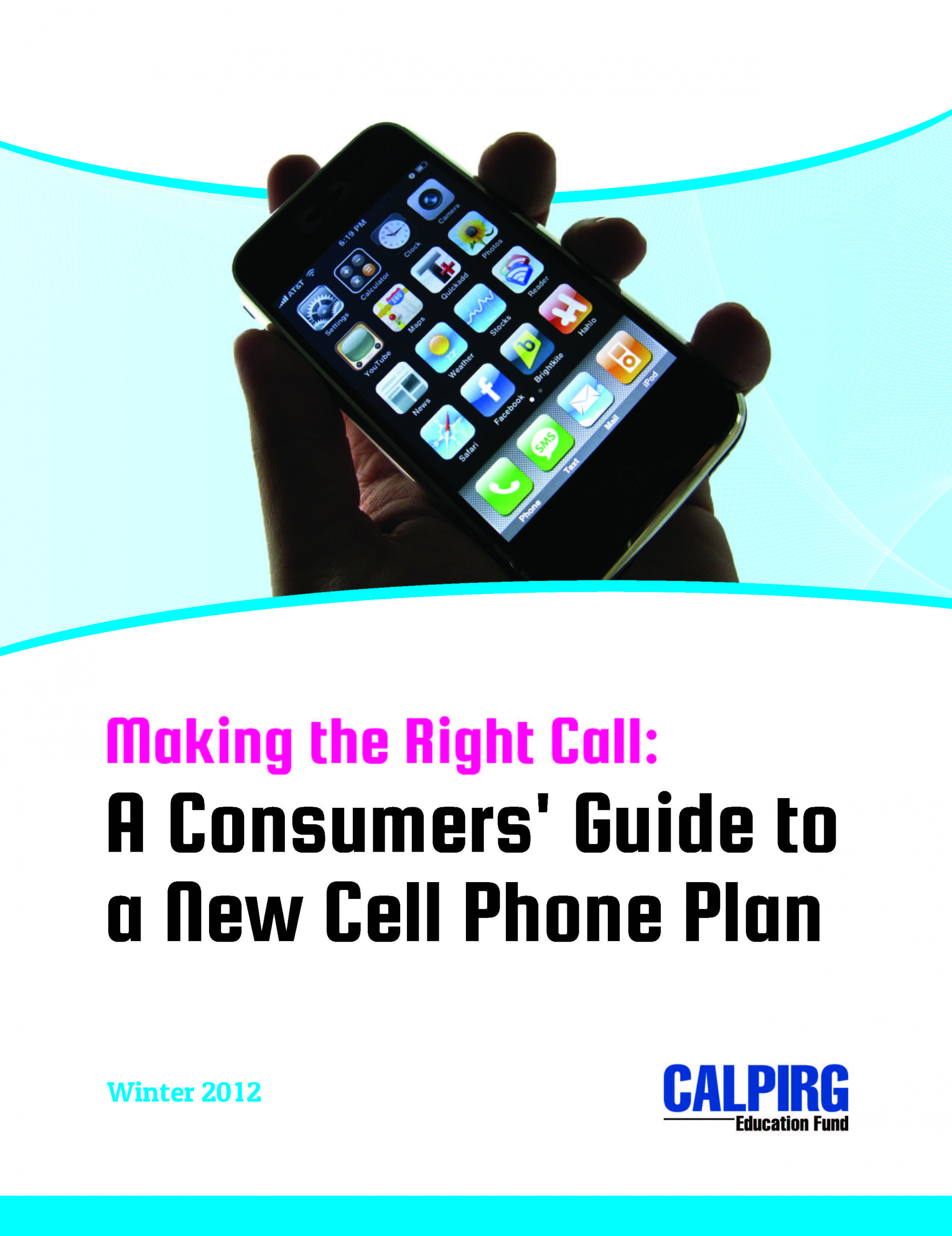Making the Right Call
A Consumers’ Guide to a New Cell Phone Plan
CALPIRG Education Fund releases new cell phone shoppers’ guide offering simple tips consumers can take to save money when buying a new cell phone.

Downloads
CALPIRG Education Fund
Wireless phone service has become a visible part of everyday life. According to a trade industry report, there are 327 million cell phones in use across the United States , and for nearly 30% of households it is their only phone service. Cell phones are moving beyond the simple tasks of providing voice and text communication, taking an increasingly central role in our lives. Americans use their phones to access the Internet, connect with friends and family, navigate, bank, take pictures and much more. Cell phones play a particularly central role for low-income consumers who access the World Wide Web primarily through wireless devices.
Buying cell phones and wireless service is a major investment for many Californians, costing an average of nearly $900 per year. It also requires choosing from a bewildering array of devices, service packages and contracting arrangements. Even consumers who do their homework are often surprised when they receive their wireless bills – 36% of cell phone customers surveyed by CALPIRG Education Fund said that their monthly cell phone bills were higher than they expected, by an average of $24 per month. A similar 2010 study by the Federal Communications Commission found that 23% of wireless device users had experienced unexpected charges of $100 or more.
This cell phone shopper’s guide – based on in-store research and consumer surveys by CALPIRG Education Fund researchers – is designed to help consumers navigate the twists and turns of today’s cell phone market.
Recommendations for consumers
Consumers who want to get the best deal on wireless phones and services should take the following seven steps:
- Know your needs. Roughly two-thirds of Americans pay for cell phone services they don’t use. Thinking about what services you use, and how much, in advance will help avoid over-paying for products you don’t need or use – potentially saving hundreds of dollars.
- Shop around. Consumers can save hundreds of dollars a year by comparison shopping – particularly for wireless devices. “Free” phones offered with two-year contracts can sometimes prove to be more expensive over time than purchasing a phone and wireless service separately. The cost of devices can vary greatly whether you buy in a brand store, at a 3rd party provider (such as Best Buy), or online. It is often cheapest to look at a phone in a store and then purchase it online.
- Consider shifting from pay-per-use to packages for text or data. For example, $10 with Verizon can buy you 50 text messages per month with a pay-per-use plan. However, you can buy a $10 monthly text package in advance with Verizon and receive 1,000 text messages, paying 1¢ per message instead of 20¢.
- Compare pre-paid and post-paid services. Compare the plan you want with a pre-paid plan versus a post-paid plan. If you are a light cell phone user, getting a pre-paid device can save you nearly $35 each month without the hassle of a two-year contract (a savings of $820 over two years!)
- Ask for a discount. Many cell phone companies provide affiliate discounts for students, members of credit unions, and to certain employers (universities, large corporations, public employees, etc.). For example, Sprint offers a 24% monthly discount for eligible students, while Verizon offers a 15% discount to all military veterans, a saving of over $20 per month. In addition, CALPIRG Education Fund research found that one in 10 stores waived the $35 activation fee upon request.
- Find true costs. CALPIRG Education Fund research found that consumers can reasonably expect to pay up to $20 per month on top of advertised prices. Advertised prices for cell phones do not include federal and state taxes, service fees, and other overage charges. A la carte pricing for wireless services can also lead to unexpectedly high bills. This complexity can make it difficult for consumers to make “apples to apples” comparisons among providers and plans. Consumers should ask which taxes and fees apply to their contract, and what their monthly base bill will look like prior to entering into a contract.
- Avoid “bill shock.” CALPIRG Education Fund found that 40% of those consumers surveyed incurred overcharges. Track your cell phone use to insure that you do not go pass your pre-paid limits and incur overcharges. All wireless providers provide tools, both online and on your phone, to track your use.
Consumers should call upon wireless companies to provide full-price disclosure to consumers signing up for new service; supply short, clear summaries of contracts; extend the time period for returns to 60 days; and provide translated versions of contracts for non-English speaking customers.
